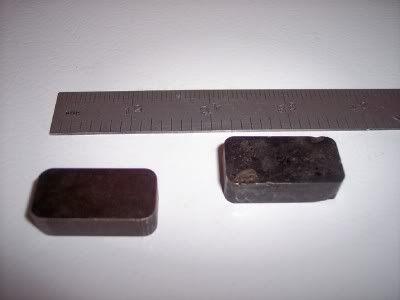I know I've said this before here but I'm going to state it again.
HSS
cuts metal.
It literally peels the material off the base stock, or separates the the
molecular bond material creating a stringer chip. It works best at
relatively low speeds and feeds.
Carbide
pushes the material off the base stock.
In order for that to happen it has to have two things.
Pressure and Heat.
The tool pressure generates the heat that plasticizes the material
to make it plyable enough to be pushed away.
The new carbide insert geometries concentrate that heat and pressure
to a finer point in the base material. That allows then to cut with less
pressure.
It is an amazing study in it's self.
I've read many posts here and abroad from home machinists saying
they can't get a good finish using carbide.
That is caused by old school thinking.
HSS cuts very well at a 120 SFM
For a 1" piece of 1018 cold roll
steel that would be 460 RPM.
Carbide needs SPEED! It cuts best at 300 - 400SFM
At the low end of that range it would be 1150 RPM for 1" stock.
Calculating SFM (Surface Feet Per Minute) is an easy formula.
It is: SPM divided by Diameter of Stock Multiplied by 3.82
If you want the spindle speed for 2" stock to be cut with carbide.
(300/2) X 3.82 = 573RPM
Cutting with HSS
(120/2) X 3.82 = 229RPM
Now for Aluminium or Brass those speeds change dramatically!
You can run 1000SFM with no extra pressure on the tool or the machine.
That's kind of like the difference between chewing gum and chewing
stones.

Rick





![DreamPlan Home Design and Landscaping Software Free for Windows [PC Download]](https://m.media-amazon.com/images/I/51kvZH2dVLL._SL500_.jpg)















![Learning AutoCAD Civil 3D 2014 [Online Code]](https://m.media-amazon.com/images/I/51F3yi9fokL._SL500_.jpg)







































